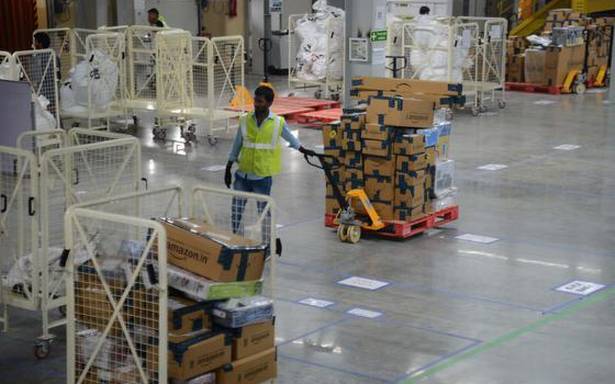Knight Frank India, an international property consultancy, in their latest report – ‘India Warehousing Market Report – 2021’, projects that annual warehousing transactions for top eight Indian cities (primary markets) will grow at a compound annual growth rate (CAGR) of 19% to 76.2 mn sq ft (7.08 mn sq m) by Financial Year (FY) 2026 from 31.7 mn sq ft (2.95 mn sq m) in FY 2021. As per the projections for the next 5 years (FY 2022 – FY 2026), e-commerce segment is expected to take up significant space estimated to be 98 mn sq ft (9.1 mn sq m) approximately registering an increase of 165% from the preceding period of FY 2017 – 2021. Third Party Logistics (3PL) and other Sector companies are expected to take up 56% (83 mn sq ft) and 43% (53 mn sq ft) more space respectively, over the same reference period.
With respect to total land committed to the warehousing development in the top 8 cities is approximately 22,488 acres, which will translate to a total buildable potential of up to 531 mn sq ft. Existing warehousing stock already accounts for 329 mn sq ft on this committed land, leaving about 202 mn sq ft of potential warehousing space that can be developed in these land parcels.
In FY 2021, the warehousing transactions in the top 8 Indian cities registered a decline of 23% year – on – year (YoY) to 31.7 mn sq ft. This decline can be attributed to the disruption caused by the pandemic and the associated lockdowns that brought economic activity to a near halt and adversely impacted occupier decisions. Chennai was the only city to witness a growth of 4% YoY to 3.5 mn sq ft in FY 2021, compared to 3.4 mn sq ft in FY 2020. While Bengaluru transaction levels remain stable, Ahmedabad and Pune were the worst-hit markets with a decline of 42% YoY each.
Occupiers showed a marked preference for Grade A properties as they are much better geared toward tackling exigencies such as those posed by the pandemic. Increased demand by e-commerce companies also resulted in increased preference for Grade A properties. 65% of all transactions during FY 2021 were in Grade A properties with the exception of Bengaluru and Ahmedabad, more than half the area transacted in all the top markets occurred in Grade A properties.
The report also evaluates 13 secondary markets. These markets show strong future potential as their current share in transactions have grown consistently from 12% in FY 2019 to 23% in FY 2021. Secondary markets accounted for 0.9 mn sq m (9.7 mn sq ft) of warehousing transactions during FY 2021.
Shishir Baijal, Chairman & Managing Director, Knight Frank India said, “The past five quarters have been nothing short of a roller coaster ride as successive infection waves adversely impacted human life. During this period, most commercial real estate asset classes have been impacted by the headwinds including the Indian warehousing sector. But inherent strength of the Indian economy, strong domestic consumer base and some unique opportunities arising out of the pandemic have mitigated the impact on the warehousing sector.”
Shishir further added, “Supply chain disruptions from the pandemic have intensified the need for more institutional players in the warehousing segment which will ensure institutionalisation of the warehouse space, leading to greater participation from the big developers. In the short run occupier activities will be dictated by the intensity of the pandemic however in the long -term perspective the sector should gain momentum aligning itself to India’s economy development trajectory.”
The warehousing space per capita in India is significantly lower than in developed economies. With the critical business objectives that a supply chain serves, industrial and warehousing spaces have a long runway for growth in this country. This premise also builds a pathway to progress on the maturity curve for the sector and promotes increased institutional participation.




![[Toyota Times] From Strengthening Foundations to Boosting Productivity – Toyota Focuses on Break-Even Volume [Toyota Times] From Strengthening Foundations to Boosting Productivity - Toyota Focuses on Break-Even Volume](https://businessfortnight.com/wp-content/uploads/2025/11/Toyota-Times-From-Strengthening-Foundations-to-Boosting-Productivity-Toyota-218x150.jpg)






























